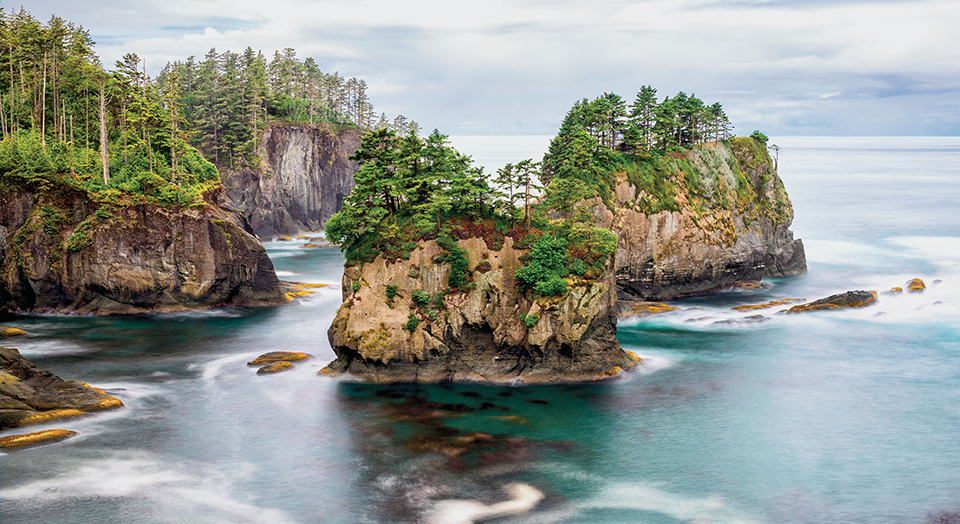Salish Sea
 Straddling the international border between Washington and British Columbia, the Salish Sea sustains life amid deep fjords, rocky islands and sheltered bays nourished by vast networks of braided rivers. This vibrant ecosystem of salt water and fresh water includes Puget Sound and the Strait of Juan de Fuca.
Straddling the international border between Washington and British Columbia, the Salish Sea sustains life amid deep fjords, rocky islands and sheltered bays nourished by vast networks of braided rivers. This vibrant ecosystem of salt water and fresh water includes Puget Sound and the Strait of Juan de Fuca.
Some of the world’s largest invertebrates, including the Pacific octopus, are found here, along with cutthroat and steelhead trout and all five species of Pacific salmon. This remarkable estuarine ecosystem also provides migratory birds with one of the most important energy refueling stops along the Pacific Flyway en route to their coastal breeding sites in Alaska.
That the gray whale still plies this sea is nothing short of a miracle. These whales migrate at least 9,000 miles—farther than any other whale species—from the shallow, warm lagoons of their Baja California breeding grounds to Arctic feeding grounds in the Bering, Chukchi and Beaufort seas. Their predictable annual migration route, typically no more than 20 miles offshore, made them easy targets for commercial whalers, who pushed the species to the brink of extinction at the end of the 19th century. Fortunately, they were granted protection in U.S. waters in 1937, with British Columbia following suit. The eastern Pacific population has since rebounded to an estimated 18,000 to 20,000 individuals.
But the gray whale’s successful comeback is tempered by depleted salmon populations and the plight of southern resident orcas in Puget Sound, which primarily feed on chinook salmon and are starving and overloaded with toxins.
To protect the Salish Sea and the wildlife it supports, we must commit to becoming better ocean stewards and work together to protect this wondrous watery world.
© 2015 by Audrey DeLella Benedict and Joseph K. Gaydos. All rights reserved. Adapted from The Salish Sea: Jewel of the Pacific Northwest by permission of Sasquatch Books.
Making a Difference
To address the pollution crisis in the Salish Sea, Defenders supported the Water Resources Development Act reauthorization which made up to $300 million available for regional clean-up efforts. At the state level, we continue to advocate for financial support for state programs that reduce toxics, such as the Derelict Vessel Removal Program. Defenders is also pressing for state and federal funding to address toxic pollution from storm water and is building relationships with local governments, schools and nonprofits to better manage stormwater runoff and expand rain gardens, which filter toxics and prevent them from entering waterways.
Only select articles from Defenders are available online. To receive 4 issues annually of the full award-winning magazine, become a member of Defenders of Wildlife!


